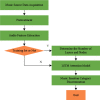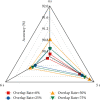Research on the Filtering and Classification Method of Interactive Music Education Resources Based on Neural Network
- PMID: 36035856
- PMCID: PMC9402344
- DOI: 10.1155/2022/5764148
Research on the Filtering and Classification Method of Interactive Music Education Resources Based on Neural Network
Retraction in
-
Retracted: Research on the Filtering and Classification Method of Interactive Music Education Resources Based on Neural Network.Comput Intell Neurosci. 2023 Oct 18;2023:9819152. doi: 10.1155/2023/9819152. eCollection 2023. Comput Intell Neurosci. 2023. PMID: 37886370 Free PMC article.
Abstract
This work intends to classify and integrate music genres and emotions to improve the quality of music education. This work proposes a web image education resource retrieval method based on semantic network and interactive image filtering for a music education environment. It makes a judgment on these music source data and then uses these extracted feature sequences as the emotions expressed in the model of the combination of Long Short-Term Memory (LSTM) and Attention Mechanism (AM), thus judging the emotion category of music. The emotion recognition accuracy has increased after improving LSTM-AM into the BiGR-AM model. The greater the difference between emotion genres is, the easier it is to analyze the feature sequence containing emotion features, and the higher the recognition accuracy is. The classification accuracy of the excited, relieved, relaxed, and sad emotions can reach 76.5%, 71.3%, 80.8%, and 73.4%, respectively. The proposed interactive filtering method based on a Convolutional Recurrent Neural Network can effectively classify and integrate music resources to improve the quality of music education.
Copyright © 2022 Biyun Xue and Ye Song.
Conflict of interest statement
The authors declared that they have no conflicts of interest regarding this work.
Figures









References
-
- Zhao L. Light music online system based on FPGA and Convolutional Neural Network. Microprocessors and Microsystems . 2021;80 doi: 10.1016/j.micpro.2020.103556.103556 - DOI
-
- Lin Q., Niu Y., Zhu Y., Lu H., Mushonga K. Z., Niu Z. Heterogeneous knowledge-based attentive neural networks for short-term music recommendations. IEEE Access . 2018;6 doi: 10.1109/access.2018.2874959.58990 - DOI
-
- Hui W., Aiyuan L. A systematic approach for English education model based on the neural network algorithm. Journal of Intelligent and Fuzzy Systems . 2021;40(2):3455–3466. doi: 10.3233/jifs-189383. - DOI
-
- Khatter H., Ahlawat A. K. An intelligent personalized web blog searching technique using fuzzy-based feedback recurrent neural network. Soft Computing . 2020;24(12):9321–9333. doi: 10.1007/s00500-020-04891-y. - DOI
-
- Shuo W., Ming M. Exploring online intelligent teaching method with machine learning and SVM algorithm. Neural Computing & Applications . 2022;34(4):2583–2596. doi: 10.1007/s00521-021-05846-6. - DOI
Publication types
MeSH terms
LinkOut - more resources
Full Text Sources

